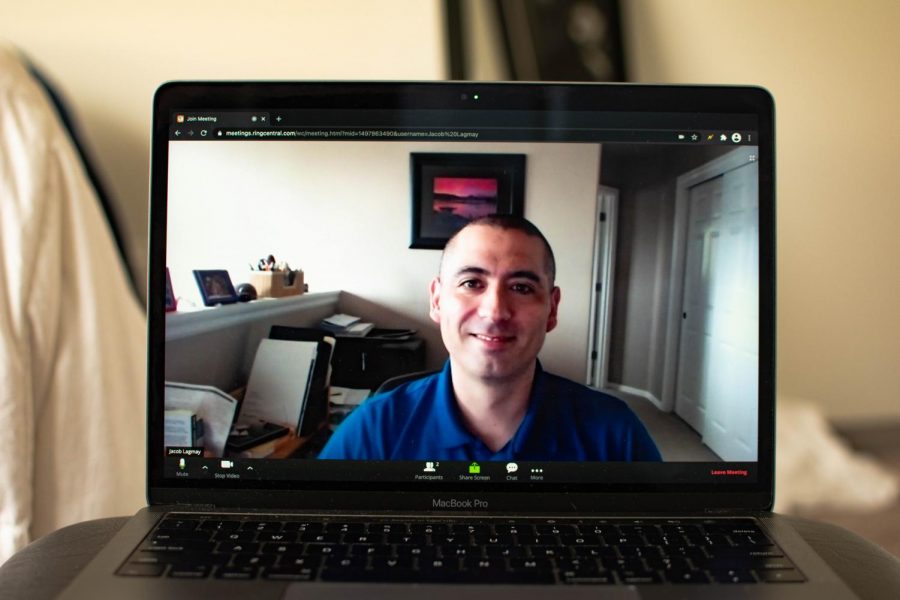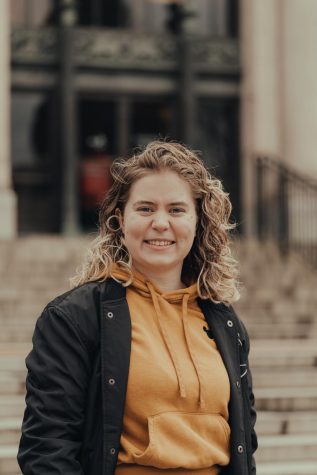The Barometer’s former editors-in-chief aimed to ‘make a difference in community’
March 1, 2021
One of the critical factors contributing to The Barometer’s exceedingly long history is the editors-in-chief who have helped the newspaper to come together and grow into new opportunities.
Last school year’s Editor-in-Chief Delaney Shea had a long history with Orange Media Network, holding positions such as the copy editor during her freshman year, news contributor, columnist, videographer, photographer, news editor and working briefly with KBVR-TV on a couple productions.
Shea, however, said that she had never really intended to be editor-in-chief. She agonized about applying for the position but wound up doing so anyway because she enjoyed working for The Barometer and wanted to challenge herself.
“It seemed like a lot of pressure, and it was,” Shea said. “[I did it] because by the time I got up to that skill level where I had been news editor for a year… I was super loyal to The Baro and the mission and the work that we did there. And, to be honest, I thought I was the best person for the job.”
During her time as editor-in-chief, Shea worked hard and made many changes to The Barometer, including adding a city section to cover Corvallis, Ore. news and focusing on timeliness so people could read about events as they happened. Both of these changes are still in effect today.
While The Barometer won multiple national, regional and state awards during Shea’s time as editor-in-chief, she said this was not what she was most proud of. Instead, she said her greatest achievement was helping her reporters and editors become experienced and comfortable in their positions.
“I think what I’m most proud of looking back… is seeing how much everyone grew over the year that I was in charge,” Shea said. “And just seeing, while people were growing, the work that they did to inform the community and call out injustice… Just getting to watch that and getting to help people do that and help that mission is what I’m most proud of.”
Overall, Shea said she enjoyed her time as an editor-in-chief at The Barometer.
“I loved everything about it even when I was having to make the tough decisions,” Shea said. “It was such an amazing opportunity for personal growth and for a chance to make a difference in the community.”
Shea’s predecessor, Marcus Trinidad, now a project coordinator at Blue Acorn ICI, held the editor-in-chief position from 2018 to 2019 and other positions such asw the web and mobile manager, news producer, news editor, news reporter and art entertainment contributor.
Like Shea, Trinidad originally hadn’t planned to apply for the editor-in-chief position, but it was his editors that convinced him to give the position a shot.
“The day applications were due, I hadn’t even thought about applying,” Trinidad said. “It wasn’t until the current editors at the time were perplexed I hadn’t submitted an application… Because me and my imposter syndrome was really holding me back. Not wanting to fail people or fail the organization, really what urged me to become an editor-in-chief is when other people saw that potential inside me.”
Trinidad said this moment is what defined his role as an editor-in-chief. After receiving support from his own editors, Trinidad wanted to help his reporters to feel like leaders in their own line of work.
“I always view my success based on what people on my team do or what happens when I’m gone,” Trinidad said. “I feel like my greatest success is seeing Delaney become editor-in-chief… I feel like she didn’t see the potential she had within herself.”
While Trinidad’s experience with The Barometer ultimately made him not want to go into journalism, he did recognize it for the skills that it gave him.
“I think the skill I learned as editor-in-chief and in my four years of journalism have been my most important thing that I’ve gotten out of college,” Trinidad said. “Being editor-in-chief didn’t really help me know what job I wanted to do, it just prepared me for anything.”
The Barometer has had a long history, dating back to 1896, but, due to news moving from print to online, the newspaper has changed significantly even in the past 20 years.
Troy Foster, The Barometer editor-in-chief from 2000 to 2001 and now the owner of Sea Gypsy Rentals in Lincoln City, Ore. and Bend Riverside Rentals in Bend, Ore. said that the biggest difference between The Barometer in the early 2000s versus now is the presence of the web.
“If you were to ask me what I’m most disappointed about [during] my time at The Barometer, it’s that we put all our eggs in the print basket and did not build our web future,” Foster said. “Some of my co-workers from that era did amazing work for the paper, but I don’t believe many of their stories—if any at all—remain alive online.”
It was also during Foster’s time that The Barometer was struggling after Oregon State University stopped offering a journalism major, but Foster was determined to beat The Daily Emerald, which is University of Oregon’s student newspaper.
Foster said the change he made that he’s most proud of was the complete redesign of the newspaper. The redesign has now been replaced, but Foster said the font and style they’d implemented, as well as many other design elements, stuck around for 10 to 15 years.
After leaving The Barometer, Foster continued his career in journalism. He spent the next five years working in print media before retiring from it in 2006.
“Working at The Barometer was the defining experience of my first 25 years on this planet,” Foster said. “It made me who I am today, and I still use many of the things I learned then in my professional career now.”
Scott Johnson, who was The Barometer’s editor-in-chief from 2001 to 2002, took over the position after Foster left. Before becoming editor-in-chief, Johnson held other positions such as the managing editor, sports editor, assistant sports editor and reporter.
“When I first started at The Barometer, my goal was to become a sports reporter,” Johnson said. “But over the years, and thanks to all the on-the-job experience, I found that I liked editing and design more than reporting.”
Johnson was also part of the team when Foster was editor-in-chief and while they were determined to beat The Daily Emerald and eventually earned many awards.
“When The Barometer was recognized… that was really validating to all of us who had dedicated so much of our lives to The Barometer,” Johnson said. “Awards can be overblown, but OSU didn’t have a journalism program then, so those of us in the newsroom were mostly self-taught, learning from our mistakes, holding each other accountable, and getting better every day.”
In the early 2000s, after losing the journalism program, The Barometer may have been a struggling team, but it’s the hard work of the previous staff members and editors-in-chief that helped the newspaper to grow into what it is today.
“During my time at The Barometer, we really evolved from a ragtag, self-deprecating group to a committed team that brought out the best in each other,” Johnson said. “The right mix of people all joined the staff at the same time, and we had a succession of leaders who were really driven to take a step forward.”




















































































![Newspaper clipping from February 25, 1970 in the Daily Barometer showing an article written by Bob Allen, past Barometer Editor. This article was written to spotlight both the student body’s lack of participation with student government at the time in conjunction with their class representatives response. [It’s important to note ASOSU was not structured identically to today’s standards, likely having a president on behalf of each class work together as one entity as opposed to one president representing all classes.]](https://dailybaro.orangemedianetwork.com/wp-content/uploads/2025/03/Screenshot-2025-03-12-1.00.42-PM-e1741811160853.png)
























